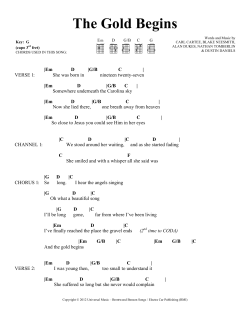
Here on the Mid Devon-Somerset border there are 3 quarries,... plants, a block works, tile works, asphalt plant, recycled aggregates...
Here on the Mid Devon-Somerset border there are 3 quarries, 2 processing plants, 2 bagging plants, a block works, tile works, asphalt plant, recycled aggregates business and 2 landfill sites. In the past two years, we have been affected by consultations on the Devon Minerals Plan and the Devon Waste Plan, and the first minerals planning application in Uffculme for 14 years was retrospectively approved in July 2013. Following submission of the Waste Plan to the Secretary of State in April 2014, there were public hearings and some modifications and it should soon be adopted. The Minerals Plan, which was last consulted on in the spring of 2012, keeps being delayed and the latest estimate is that the pre-submission report will be released and consulted on next spring. In Uffculme parish there is an area known as Hillhead-Broadpath and its ownership is divided between two companies: Aggregate Industries (AI), part of the Swiss-based company, Holcim, and Viridor, a waste company owned by Pennon, which also owns South West Water. In the neighbouring parish of Burlescombe, AI owns the large limestone quarry at Westleigh, and German-owned Hanson operates a sand and gravel quarry at Town Farm, which was the last sand and gravel quarry permitted in Devon. The company’s processing and bagging plant is just over the Somerset border at Whiteball. Hillhead is an excavated sand and gravel quarry and the processing plant that used to be there was removed after Aggregate Industries mothballed its Uffculme operations in 2009. It is supposed to be restored by 2042. Houndaller is an extension to Hillhead that was licensed in 1990 and was to have been worked and restored by the end of 2018. Broadpath is the existing landfill site that Viridor have been operating since 1997. It is one of three nonhazardous landfill sites in Devon and its permission expires in 2023. An area permitted for mineral extraction is known as a landbank and at the end of 2012 Devon had a sand and gravel landbank of 8.3 million tonnes. Houndaller contains approximately 4m sand-rich tonnes of these. The National Planning Policy Framework (NPPF) requires Mineral Planning Authorities to provide a minimum of seven years’ worth of supply for sand and gravel, and it also requires them to produce an annual Local Aggregate Assessment (LAA). In its 2014 LAA, Devon County Council said that it had a landbank of 14.5 years for sand and gravel, which is based on a weighted average of sales between 2003-12. But it also says that it “may have to make additional provision if a minimum landbank of seven years is to be maintained for its [Minerals] Plan period to 2031”. This appears to mean it wants to permit reserves up to 2038, and the council has a history of over-estimating its needs. The 2015 LAA has been drafted, and sand and gravel production in 2013 was 485,037t, down from 492,816t in 2012. With a landbank of about 7.8m tonnes and using the ©Culm Waste and Minerals Group, SUMMARY, October 2014 Page 1 weighted average of 0.57m tonnes, currently permitted reserves could provide for the county’s needs up to 2028. So, more reserves need to be permitted - and nearly all sites that get through this stage in planning go on to get planning permission approved. The 2012 Devon Minerals Plan proposed two areas in the county for future sand and gravel quarrying. Aggregate Industries owns the mineral rights and the majority of the land in both areas. Straitgate Farm, near Ottery St Mary. The site is half a mile from AI’s Rockbeare Quarry, which will be finished this year. In 2013, the company estimated there were 3.1mt of reserves with a projected life of 10 years and tests have shown that it has a higher percentage of gravel than Penslade. Aggregate Industries has made no secret of the fact that it wants to work Straitgate first, and since 2012 the company has conducted extensive tests, submitted a number of reports to DCC and consulted informally with statutory consultees and local residents. In September 2014, as reported by Straitgate Action Group, Aggregate Industries undertook more archaeological survey work and in a notice by the site the company confirmed that it is proposing to submit a planning application for a new quarry there. This is the reason for the continued delay in the Minerals Plan, and Straitgate Action Group report that the quarryable area is now c. 25 hectares yielding c. 2 million tonnes. Penslade, which is half a mile from Hillhead. The initial proposal was reduced by DCC from 179 acres, with an estimated 18mt reserve, to 109 acres. Aggregate Industries wanted permission to extract 350,000t per annum, double historic production rates, and processing capacity in a new £2-3m plant but no further testing or consultation has taken place here since 2012. CWMG has asked if further discussions will take place with statutory consultees and local residents if Penslade is to be included in the pre-submission version of the Minerals Plan and the council has confirmed that this would have to take place. A key issue for both areas is where material will be processed after it is dug up. Currently, sand and gravel is taken to Blackhill Quarry near Exmouth, but planning permission for that expires in 2016 and it is unlikely that Devon County Council will extend it as the area now has a Special Protection Area (SPA) designation. Given that Aggregate Industries stated in 2012 that it wanted a processing plant at Uffculme, and the ease with which it got retrospective planning permission for a bagging operation here in 2013, there has always been a high risk that a replacement for Blackhill would go here. Aggregate Industries had a blockworks at Rockbeare and it is possible that it could be used for a processing plant. Although it sold Hillhead and Houndaller to Viridor, Aggregate Industries retains the mineral rights to the remaining reserves. Following a periodic Review of Old Mineral Permissions (ROMP) which AI submitted in March this year, the council advised it that an Environmental Impact Assessment (EIA) is required and the next stage is the production by the council of a Scoping Opinion. This will determine the issues which are to be the subject of detailed ©Culm Waste and Minerals Group, SUMMARY, October 2014 Page 2 studies – i.e transport, ecology, landscape and visual impact. According to the Local Aggregates Assessment (LAA) published by the council in March, operators can seek the extension of permitted time limits and “failure to do so would lead to lapsing of planning permissions and consequent loss of permitted reserves.” So AI could walk away from Houndaller, and by selling to Viridor appear to have wanted to, and at the last liaison group meeting a company representative said that it currently has no plans to return there. This month a geological expert from AI is due to carry out a 2 yearly stability assessment of all faces, tips and lagoons. It should also be noted that, in its Pre-submission Minerals Plan, Somerset County Council (SCC) has indentified a Preferred Area and Area of Search for when Town Farm ceases. It is land owned by Hanson and is opposite its Whiteball plant. In the past 10 years most of Somerset’s sand and gravel has come from Town Farm, and sales into Somerset have been used to define Devon’s required landbank. But SCC says that a new quarry could contribute to the needs of both counties. In the first version of the Devon Waste Plan, 98 acres of Hillhead and Houndaller were put forward as an option for a new landfill site. Viridor subsequently said it considered “that Hillhead Quarry is suitable for built waste management development including recovery”. But in the Pre-submission version of the Plan, Devon County Council dropped the three disposal sites it previously said were strategic “in recognition of the uncertainty over future requirements for landfill and a desire to avoid over-provision of capacity”, and they did not put the site forward as a location for a recovery / Energy-from-Waste (EfW) plant. Following submission of the Devon Waste Plan to the Secretary of State, an Inspector examined it in a series of hearings in July 2014, which led to modifications and another consultation. The council is now committed to monitoring the rate at which remaining landfill capacity is utilised and, if necessary, undertaking a partial review of the Plan to deliver additional capacity. This would include public consultation and independent examination. With no pressure on Viridor to restore Hillhead, it will probably be happy to do nothing with the hole until it knows whether it wants a landfill site in this area beyond 2023; it has previously stated its intention to reduce significantly the number of landfill sites it operates. ©Culm Waste and Minerals Group, SUMMARY, October 2014 Page 3
© Copyright 2025












